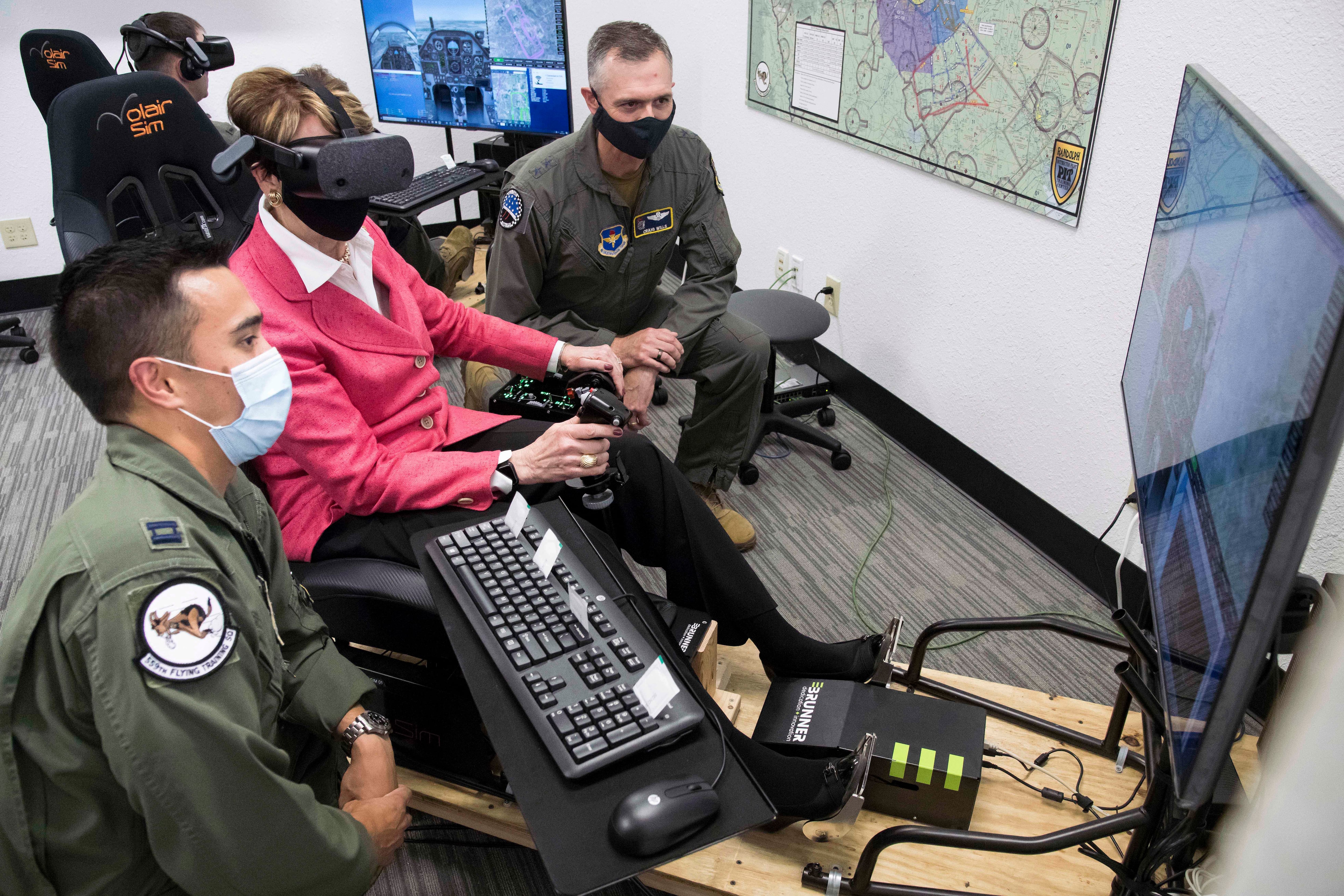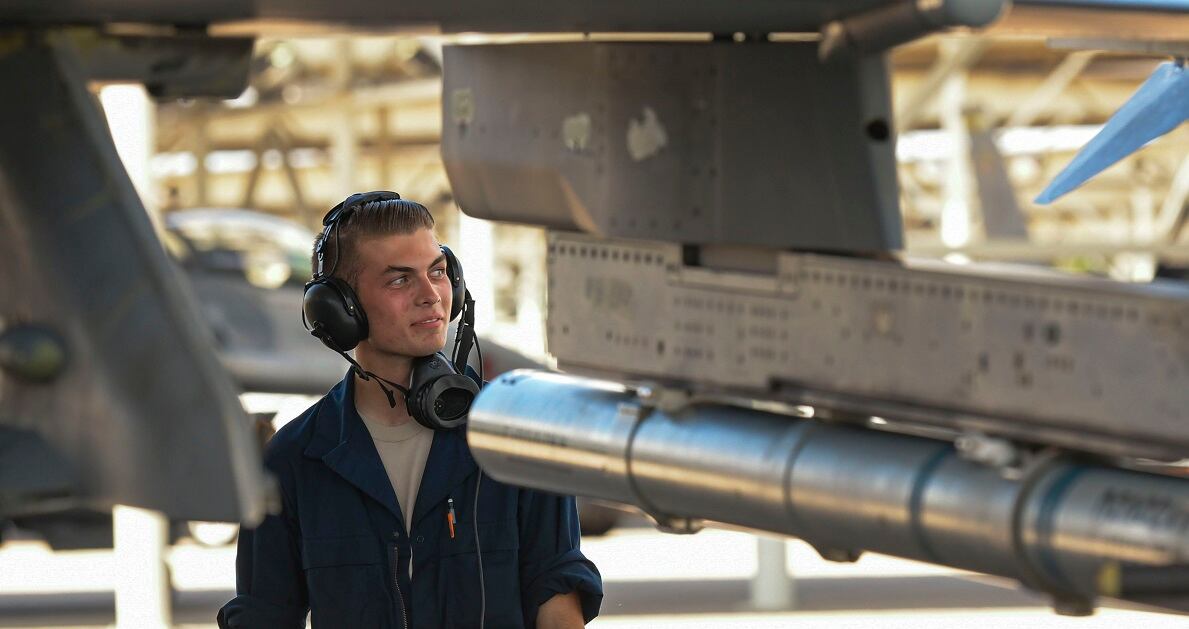Air Education and Training Command is turning to the digital realm to teach maintainers about their aircraft under a new program that relies on virtual reality.
Dubbed “Technical Training Transformation,” or T3, the effort looks to engage maintenance students in new ways, without the typical constraints posed by issues like aircraft availability. It could ultimately help speed the time it takes to churn out maintainers, and more quickly give them the experience they need to bolster the midlevel and senior ranks.
Sheppard will host two full-fledged VR courses in crew chief fundamentals and logistics planning next year, the Air Force said.
“Students are going out to the line more capable and more comfortable in their role,” said Maj. Jesse Johnson, who oversees T3 as the commander of an AETC detachment at Joint Base San Antonio, Texas. “I definitely see it being a force multiplier.”
RELATED

The T3 initiative launched over two months during summer 2020 as part of AETC’s earlier, tech-focused “Maintenance Next” experiments. Twenty-nine students in the crew chief fundamentals course at Sheppard Air Force Base, Texas, used VR headsets to examine tools, repair simulated aircraft and learn other tricks of the trade.
The Air Force spent $5,000 to $6,000 apiece on about 30 VR gaming systems for the initial pilot program. As technology has gotten better, cheaper and smaller, the service has downsized to headsets like Facebook’s Oculus or HTC’s Vive models at several hundred dollars each.
To test the technology, students first completed the usual three-week course in a classroom, then tried out the VR version of the class over two weeks while waiting to move to their next base. It took students about half the time to learn the same fundamentals in the digital course compared to the regular version.
Their scores were comparable across both methods, the Air Force said.
“Each student has their own classroom on their head. That allows each and every single student to see their own plane, and they all get to work on that plane by themselves,” Tech. Sgt. Kyle Ingram, an instructor supervisor in the Fundamentals of Aircraft Maintenance program at Sheppard’s 362nd Training Squadron, told reporters on a call Tuesday.
Students can see their instructors inside the headset as well as ask for help outside of the virtual environment. The approach also avoids unnecessary aircraft damage caused by inexperienced maintainers who don’t know what they’re doing, Ingram said.
Earlier this summer, the team began testing artificially intelligent characters that can answer students’ questions and grade their work inside the headset. Those avatars are based on interviews with technical sergeants or master sergeants who have achieved craftsman-level expertise in the field, possibly freeing up their real-life counterparts to work on aircraft.
The Air Force pushed back on criticism that virtual training won’t work as well as hands-on training because it fails to build the same kind of muscle memory. Digital repetition of a task ahead of time bolsters an airman’s understanding of and skill at real-world work, Johnson said.
“That is going to help the quality of training that we give to the students, getting them more prep for the flight line prior to them actually getting to the flight line,” Ingram added.
RELATED

Future improvements will offer a way to track how well a student is learning and what they’ve accomplished, Johnson said. He hopes that data could eventually be used to further personalize airmen’s education based on their learning style and where they fall short.
While the team’s proponents want to spread VR tools across the service — which has begun using it in limited instances for pilot training — they acknowledge there are hurdles that could take years to clear.
The challenges range from high-tech to mundane: Even for commercially built hardware and software that’s ready to buy, airmen would still need wireless internet access on base that is widespread and fast enough to support VR imaging. Air Force installations also need more electrical outlets to plug the systems into, Johnson added.
“Our infrastructure is not built to manage this, and we haven’t trained folks to be able to build adaptive, immersive content,” he said. “I think we could get to a fully capable and available system that will allow students to do that within the … next couple of years.”
Rachel Cohen is the editor of Air Force Times. She joined the publication as its senior reporter in March 2021. Her work has appeared in the Washington Post, the Frederick News-Post (Md.), Air and Space Forces Magazine, Inside Defense, Inside Health Policy and elsewhere.





